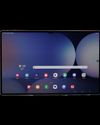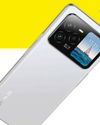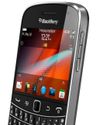
As digital experiences become more prevalent, the significance of sensory engagement in product design has never been more crucial. The tactile feel, auditory feedback, and even the scent of our interactions with technology are no longer just enhancements—they are essential to connecting with the devices we use daily. From the smooth glide of a smartphone screen to the soothing soundscapes within apps and now the fragrance accompanying the unboxing of a new gadget, the tech industry is increasingly recognising the potential of multisensory design.
TOUCH: THE LANGUAGE OF INTERFACE
The tactile experience has long been a focal point in tech design. The sensation of touch is one of the most direct ways users interact with technology, and it often defines the quality of the experience. Apple, for instance, has consistently emphasised the importance of touch in its products. The iPhone’s haptic feedback, which provides a subtle vibration when users interact with the screen, exemplifies how tactile elements can enhance user engagement. The sensation is not just a response; it is carefully calibrated to mimic the feeling of pressing a physical button, thereby bridging the gap between the digital and physical worlds.
This story is from the September 2024 edition of Exhibit.
Start your 7-day Magzter GOLD free trial to access thousands of curated premium stories, and 9,000+ magazines and newspapers.
Already a subscriber ? Sign In
This story is from the September 2024 edition of Exhibit.
Start your 7-day Magzter GOLD free trial to access thousands of curated premium stories, and 9,000+ magazines and newspapers.
Already a subscriber? Sign In

7 NEW WHATSAPP FEATURES Everyone Is Talking About
Meta’s WhatsApp clinched Google’s Best Multi-Device App Award for 2024, solidifying its reputation as a must-have communication tool.

SONY WF-C510 WIRELESS EARBUDS
THE AFFORDABLE CHOICE FOR QUALITY AUDIO

SAMSUNG GALAXY TAB S10 ULTRA
A PREMIUM TABLET EXPERIENCE

WHAT FITS MY POCKET
When it comes to making smart choices within a ₹30,000 budget, you don't have to compromise on quality or performance. With the right selection, you can equip yourself with a trio of cutting-edge products that balance innovation, utility, and value. Here are three stellar recommendations:

A VIRAL ESCAPE
Evolving Back to Hampi in the Mercedes-Benz GLS 450d

STOP GOOGLE
From Tracking Your Location Without GPS

HOW TO BLOCK SPAM CALLS AND SMS ON JIO USING THE MYJIO APP?
Spam calls and SMS have become unpleasant nuisances.

GUARD YOUR DIGITAL FOOTPRINT
Why You Should Remove Metadata Before Sharing Photos?

10 AWESOME TECH FEATURES OF THE NEW AUDI Q7
Audi’s flagship three-row SUV, the Q7, carries a quiet charm that has made it a favourite for over a decade among those who prefer understated luxury to flashy extravagance.

BLACKBERRY BOLD 9900
Before the rise of touchscreen devices, the BlackBerry Bold 9900 was the ultimate smartphone. Released in 2011, this iconic device was a blend of complexity, functionality, and innovation.